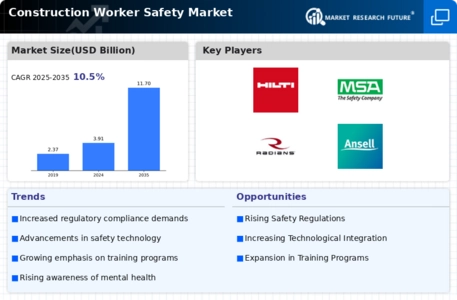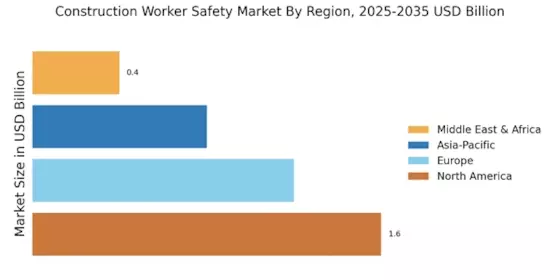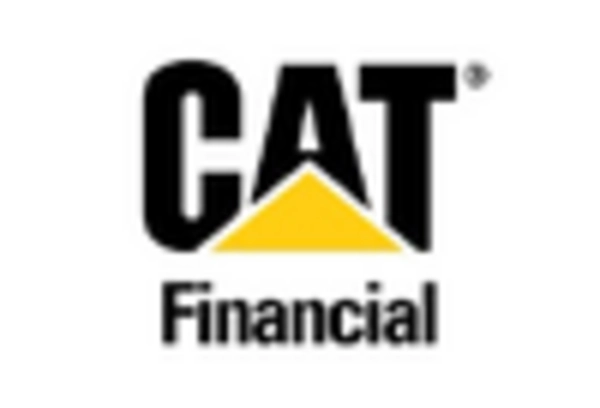Regulatory Changes and Compliance
Regulatory changes and compliance requirements are driving the Construction Worker Safety Market in notable ways. Governments are increasingly implementing stringent safety regulations to protect workers on construction sites. For instance, the introduction of new safety standards can compel companies to invest in better safety equipment and training programs. The market for safety equipment is projected to reach substantial figures, with estimates indicating a growth rate of around 5% annually. Compliance with these regulations not only ensures worker safety but also mitigates the risk of legal liabilities for construction firms. As such, adherence to evolving regulations is likely to remain a key driver in the Construction Worker Safety Market.
Rising Awareness of Mental Health
The rising awareness of mental health issues within the Construction Worker Safety Market is emerging as a crucial driver. Mental health challenges can significantly impact worker productivity and safety. As the industry acknowledges the importance of mental well-being, companies are beginning to implement programs aimed at supporting workers' mental health. This shift is likely to lead to a more holistic approach to safety, encompassing both physical and mental health aspects. Research indicates that organizations that prioritize mental health can experience a reduction in absenteeism and an increase in overall job satisfaction. Consequently, this growing focus on mental health is expected to influence the Construction Worker Safety Market positively.
Integration of Wearable Technology
The integration of wearable technology in the Construction Worker Safety Market appears to be a pivotal driver. Devices such as smart helmets and safety vests equipped with sensors can monitor workers' vital signs and environmental conditions in real-time. This technology not only enhances individual safety but also provides data analytics for improving overall site safety protocols. The market for wearable technology in construction is projected to grow significantly, with estimates suggesting a compound annual growth rate of over 20% in the coming years. As construction companies increasingly adopt these innovations, the emphasis on worker safety is likely to intensify, thereby driving the Construction Worker Safety Market forward.
Adoption of Advanced Safety Equipment
The adoption of advanced safety equipment is a prominent driver in the Construction Worker Safety Market. Innovations such as automated safety systems, drones for site inspections, and advanced personal protective equipment (PPE) are becoming increasingly prevalent. These technologies not only enhance worker safety but also improve operational efficiency. The market for advanced safety equipment is anticipated to grow, with projections indicating a potential increase of over 10% annually. As construction firms seek to minimize risks and enhance safety protocols, the demand for such equipment is likely to rise. This trend underscores the importance of technological advancements in shaping the future of the Construction Worker Safety Market.
Increased Focus on Training and Education
An increased focus on training and education within the Construction Worker Safety Market is becoming increasingly evident. Companies are recognizing that comprehensive training programs can significantly reduce workplace accidents and injuries. According to recent data, organizations that invest in safety training can see a reduction in incident rates by up to 30%. This trend is likely to continue as more firms prioritize the development of a safety culture. Furthermore, the demand for certified safety professionals is on the rise, indicating a shift towards a more educated workforce. This focus on training not only enhances worker safety but also contributes to the overall growth of the Construction Worker Safety Market.


















Leave a Comment